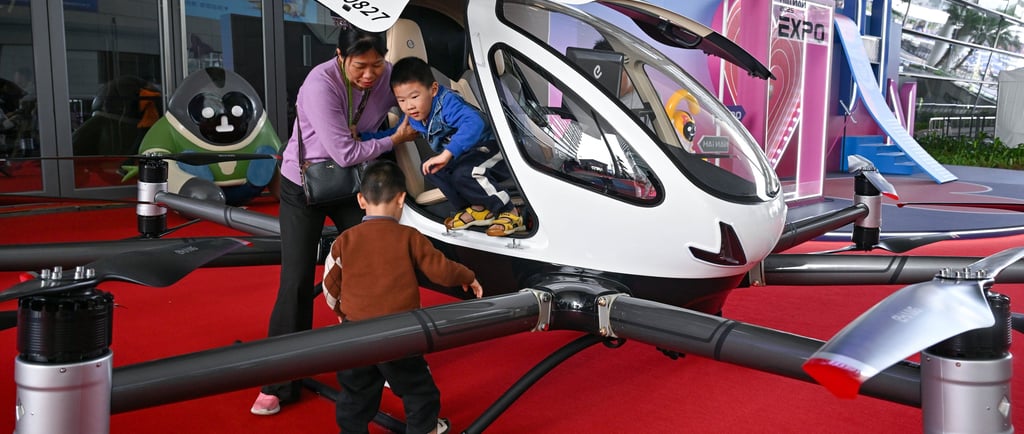The Future of Urban Commutes: Flying Taxis Set to Revolutionize Transportation
These innovative aircraft promise to alleviate congestion on city streets,
6/28/20252 min read


The Advent of Flying Taxis
Urban commuting has undergone dramatic changes over the years, from horse-drawn carriages to high-speed trains. Now, as cities expand and populations increase, the transportation sector stands at the brink of yet another significant transformation: the introduction of flying taxis. These innovative aircraft promise to alleviate congestion on city streets, offering a fast, efficient, and eco-friendly alternative to conventional public transport.
How Flying Taxis Work
Flying taxis, often referred to as Urban Air Mobility (UAM) vehicles, utilize advanced technology to operate within urban environments. Equipped with vertical takeoff and landing (VTOL) capabilities, these aircraft can ascend and descend in tight spaces, making them ideal for densely populated areas. The integration of electric propulsion systems further enhances their appeal by promising reduced noise pollution and lower carbon emissions compared to traditional helicopters.
The Benefits of Flying Taxis
One of the most significant advantages of flying taxis is their potential to dramatically reduce travel time. Consider a journey that typically takes an hour by car in heavy traffic. A flying taxi could complete the same route in just a fraction of that time, allowing commuters to reclaim valuable hours each day. Furthermore, with urbanization on the rise, taking to the skies offers a viable solution to ground congestion, ensuring smoother and more efficient transport systems.
Additionally, flying taxis are designed with safety features in mind. Most models incorporate multiple redundant systems to ensure operation even in adverse conditions. This commitment to safety, alongside rigorous regulatory frameworks, will be essential in fostering public trust in this new mode of transport.
Moreover, flying taxis are expected to create new job opportunities and stimulate economic growth. As more companies enter the UAM space, demand for skilled technicians, pilots, and support staff will grow, contributing positively to the economy.
In conclusion, flying taxis are poised to revolutionize urban commuting by offering a practical, efficient, and forward-thinking alternative to traditional transportation methods. As technology progresses and infrastructure develops, the dream of soaring above the congested streets may soon become a reality for city dwellers. Embracing this innovative approach to transportation will not only enhance mobility but also serve as a catalyst for sustainable urban development.
